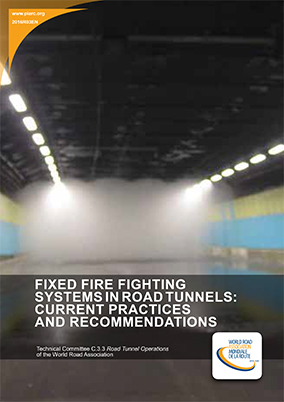Fixed fire fighting systems in road tunnels: Current practices and recommendations

Fixed Fire Fighting Systems (FFFS) have been routinely used in road tunnels in countries such as Japan and Australia for decades, and there is increased interest in the use of FFFS in parts of Europe, North America and Asia.
Large fire events in road tunnels continue to show the consequences of such an event. These consequences can be to the users, the tunnel infrastructure, and the impact to the wider road network on society. This has maintained the pressure for further improvements to techniques and technologies to manage the risk and consequence of fires in road tunnels. FFFS are increasingly seen as a method that can deliver user safety and infrastructure protection, and can be used as a risk reduction measure. However, their use is not widespread for various political, economic, technical and social reasons. It is still recognised that FFFS may not be the most appropriate measure to adopt in all circumstances or in all locations.
Within this report, the functional impact FFFS can make to the performance of tunnel fire safety systems is discussed. Information is presented about the types of systems available, their use in road tunnels for various countries, and advice provided on the design and selection of appropriate FFFS. Where FFFS are adopted, it is essential that they are correctly designed, installed, integrated, commissioned, maintained, tested and operated. Where FFFS are installed, it is recommended that they are activated in the early stages of a fire to minimise fire growth and to provide the desired effectiveness.
Information sheet
- Date: 2016
- Author(s): Comité technique 3.3 Exploitation des tunnels routiers / Technical Committee 3.3 Road Tunnel Operation
- Domain(s): Road Safety / Road Tunnel Operations
- Type: 2016R03EN - Technical Report
- PIARC Ref.: 2016R03EN
- ISBN: 978-2-84060-375-7
- Number of pages: 80